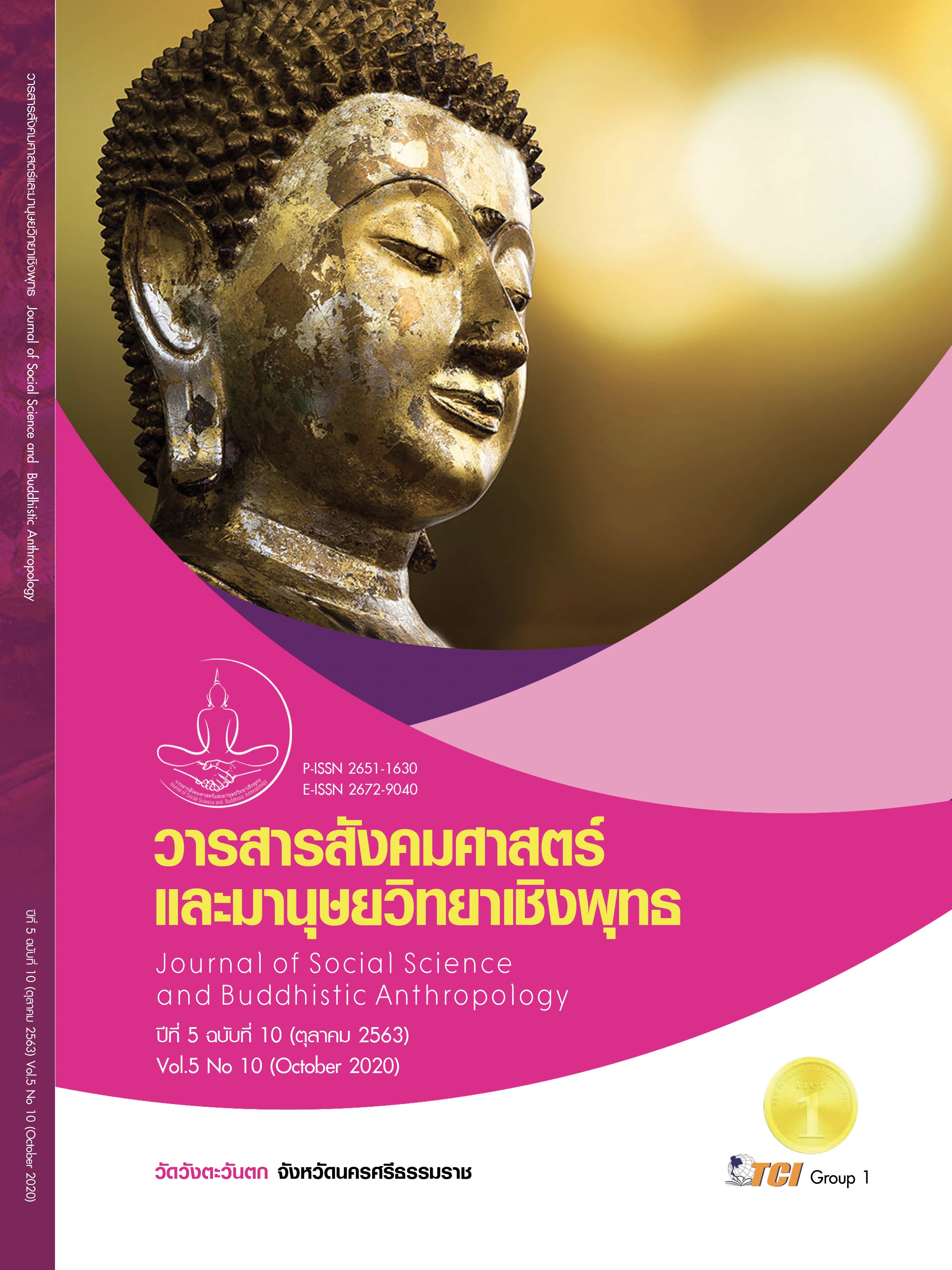THE CAUSAL FACTOR IN SOCIAL MEDIA MARKETING STRATEGIES THAT AFFECT THE BRAND EQUITY IN BEAUTY CLINICS IN THAILAND
Keywords:
The Causal Factor, Marketing Strategies, Social Media, Business Beauty ClinicsAbstract
This article of this study were: 1) study the social media marketing strategy factors and brand value of beauty clinics in Thailand and 2) Consistency analysis of the social media marketing strategy model that effect to the brand value of the beauty clinics in Thailand. This study was quantitative research by integrated method. The method was the multi-step sampling questionnaire. The samples were 400 beauty clinic consumers by using LISREL technique for analyzed frequency, percentage, average, minimum and maximum, standard deviation, Measures of Skewness and Kurtosis. The quality method was used in specific depth interview. The primary informants are experts in online media marketing strategies and the administrator responsible for online marketing including with 1) Executives 2) the academics by totaling 7 people for analyzing the content and overview summarizing. The results of the study revealed that: 1) Social media marketing strategy factors consisted with 1.1) motivation such as information and achieving information goals, 1.2) media attitude such as, easy to use, useful, and perceived benefits, 1.3) the media formats such as Instagram and website, 1.4) marketing strategies such as online brand community, user-created content and customer participation and 1.5) value of product branding such as brand awareness, brand royalty, recognize product quality, brand image and brand trust. And 2) To test the structural equation modeling namely the model of consistency with empirical data, statistical significance at the level of 0.01 is the Chi-Square value of 59.902 degrees of freedom, 49 of the probability of 0.137 and the RMSEA of 0.22.
References
บุญชม ศรีสะอาด. (2556). วิธีการทางสถิติสำหรับการวิจัย เล่ม 2. กรุงเทพมหานคร: สุวีริยาการพิมพ์.
ผู้จัดการ. (2562). ธุรกิจความงามพุ่งแสนล้าน “ยักษ์ใหญ่-หน้าใหม่” บุกหนัก. เรียกใช้เมื่อ 19 มกราคม 2562 จาก http://gotomanager.com/content/ธุรกิจความงามพุ่งแสนล้าน-“ยักษ์ใหญ่-หน้าใหม่”-บุกหนัก
ศูนย์วิจัยเศรษฐกิจและธุรกิจ (อีไอซี) ธนาคารไทยพาณิชย์. (2562). ตลาดเสริมความงาม-ชะลอแก่ทั่วโลก พุ่งปรี๊ด...รับเทรนด์ "สังคมสูงวัย". เรียกใช้เมื่อ 14 มกราคม 2562 จาก https://www.smartsme.co.th/content/52356
สุชาติ ประสิทธิ์รัฐสินธุ์. (2546). ระเบียบวิธีการวิจัยทางสังคมศาสตร์. กรุงเทพมหานคร: บริษัทเฟื่องฟ้า พริ้นติ้ง.
Alhaddad, A. (2015). A structural model of the relationships between brand image, brand Trust and brand loyalty. IJMRR, 5(3), 137-144.
Coelho, R. L. F. et al. (2016). Does social media matter for post typology? Impact of post content on Facebook and Instagram metrics. Online Information Review, 40(4), 458 - 471.
Cronbach, L. J. (1990). Essentials of psychological testing (5th ed.). New York: Harper Collins.
Dib, H. & Alhaddad, A. (2014). The hierarchical relationship between brand equity dimensions. European Scientific Journal October 2014 edition, 10(28), 183 - 194.
Dowerah Baruah, T. (2012). Effectiveness of Social Media as a tool of communication and its potential for technology enabled connection: A micro-level study. International Journal of Scientific and Research Publications, 2(5), 163 - 184.
Fourati, Z. et al. (2014). A highly conserved region essential for NMD in the Upf2 N-terminal domain. Journal of molecular biology, 7(22), 3689-3702.
Godey, et al. (2016). Social media marketing efforts of luxury brands: Influence on brand equity and consumer behavior. Journal of Business Research, 69(12), 160 - 182.
Hajli, M. N. (2013). A study of the impact of social media on consumers. International Journal of Market Research, 56(3), 387 - 404.
Krejcie, R. V. & Morgan, D. W. (1970). Determining Sample Size for Research Activities. Educational and Psychological Measurement, 30(3), 607 - 610.
Likert, R. (1967). The Method of Constructing and Attitude Scale”. In Reading in Fishbeic, M (Ed.), Attitude Theory and Measurement. New York: Wiley & Son.
Pelamo, L. (2018). brand equity building through social media marketing. International Business, 42(1), 7 - 43.
Vijay, V. et al. (2015). Media usage patterns of social media users. Applied Marketing Analytics, 1(3), 252 - 266.
Wang, X. (2011). The Relationship Between Use of Social Media and Customer Relationship From E-commerce Model Perspective. Retrieved May 25 , 2019, from https://lup.lub.lu.se/luur/download?func=downloadFile&recordOId=1981813&fileOId=1981815
Zahari, A. R. & Mohd, N. (2011). Does family and viral marketing have any effect on brand equity? Contemporary Marketing Review, 1(9), 19 - 31.








